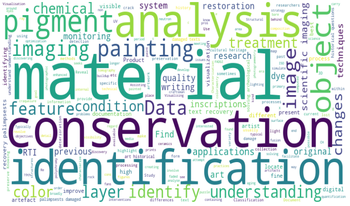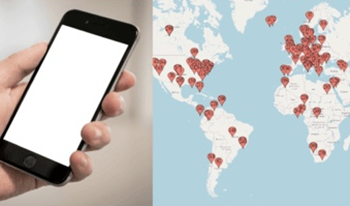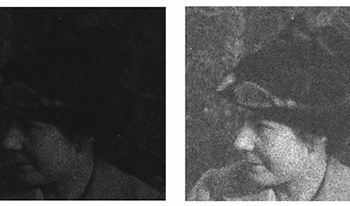
This work presents insights into the imaging workflow from cultural heritage domain experts, gathered from an online survey. Non-invasive 2D imaging technology has become a cornerstone in the analysis and documentation of cultural heritage artefacts. Techniques such as hyperspectral imaging (HSI) and X-ray fluorescence (XRF) can investigate material properties, artistic processes, and conservation states. Existing analysis and visualisation tools offer functionality for specific data types but lack integration for holistic multimodal analysis. To address these limitations, we conducted a structured survey targeting researchers and practitioners in CH working with imaging technology. The survey explores their workflows, imaging technology usage, and software preferences. This study identifies key trends, challenges, and feature requirements.

Mobile phone cameras are imaging tools that are rapidly being adopted by various industries due to their portability and ease of use. Though not currently considered an adopted imaging tool for cultural heritage, there has been increased interest in their potential use within the field. To better understand how cultural heritage professionals considered mobile phone cameras as tools for various types of documentation, a survey was created and administered. A survey was designed and sent to cultural heritage groups involved with imaging with the goal of determining whether these types of cameras are practical imaging devices in circumstances where a studio or a DSLR may not be readily available. Initial results have shown a variety of responses and that mobile phones are being used for various types of documentation.

Autochromes, invented by the Lumi`ere Brothers in 1907, consist of a glass plate, photographic emulsion, and a colour filter made of dyed potato starch granules and carbon. Due to the autochrome’s fragile nature and susceptibility to fading and damage, many institutions limit the plates’ exposure to light and movement. This highlights the importance of high-quality digitisation to ensure wider public access and preservation. Currently, there are no specific guidelines for digitising autochromes. To address this, a survey was conducted to understand current practices around autochrome digitisation. Additionally, imaging tests were performed to evaluate different methods and provide guidelines. The survey results and experimental findings will inform standardised digitisation approaches.